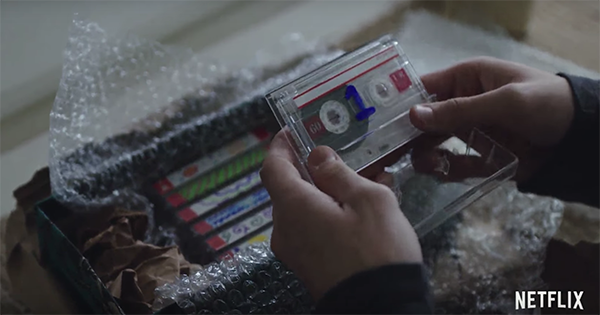The new series “13 Reasons Why,” a Netflix Original based off of the 2007 novel by Jay Asher, tells the story of high schooler Hannah, who has killed herself and left her friends and peers 13 audio tapes explaining why she did it. Each episode’s primary plot line focuses around a tape about a person who played a part in her suicide, and each person is left with a copy of these tapes to listen and follow along with, in order to find out “why” she killed herself. Throughout the series, various characters who are a part of Hannah’s story are sent on her journey where she seeks revenge on the people who have wronged her.
While this series discusses the often misrepresented and abhorrently under-addressed topic of suicide, it does so without thoroughly addressing the realities of suicide. According to Centers for Disease Control and Prevention, suicide is the second leading cause of death among people between the ages of 10-24, which may overlap with the age group of viewers watching the show. “13 Reasons Why” does not properly portray this topic with the viewer’s best interest in mind, running the risk of communicating harmful messages to a demographic that is susceptible to high suicide rates.
For starters, this series does not include any reference for viewers who may struggle with depression and suicidal thoughts (there is a striking absence of suicide hotline numbers, which is the very least they can do). This defaults the plotline as a reference for dealing with situations like Hannah’s.
All the characters in the show are experiencing the consequences of Hannah’s actions, however, there is no disclaimer at the beginning or end of the show telling people where they can go to get help if they feel like they may be at risk of acting on suicidal thoughts. Dealing with a topic this fragile and potentially time-sensitive makes the lack of resources for viewers who may identify with Hannah especially harmful, and the show portrays confusing messages and mixed information about how to address mental health issues.
“13 Reasons Why” romanticizes suicide by showing Hannah’s death as a satisfactory mechanism of revenge on her peers. Throughout the series, Hannah is portrayed as struggling with maintaining friendships and being liked and seen. After she kills herself and leaves the tapes for people to follow, she is suddenly the person everyone is invested in. By subliminally making this connection, the show potentially leaves viewers who may be feeling alone like Hannah to see suicide as a viable option for receiving the love and attention they feel is absent in their lives. These mixed messages, in combination with the lack of resources for those who are experiencing suicidal thoughts, provides a dangerous combination for viewers who rely on media and internet phenomena to answer their internal questions about their own mental health. According to Seventeen magazine, it was “tweeted about more than any other Netflix show in its first week of streaming.” The visibility the show is receiving leaves a wider audience vulnerable to the misrepresentation of suicide.
The series also portrays suicide as consequence of bullying from others, while dismissing the issue of depression or mental illness altogether. All of the tapes of people who have “wronged Hannah” reinforce the notion that her suicide was a coherent result of the actions of others; there is little emphasis on the mental struggles Hannah could have been experiencing which have clearly been heightened by bullying.
Many of the characters felt as though they had “killed” Hannah, leaving the viewers with the anomalous narrative that people surrounding the person who dies by suicide are inherently at fault; that if they had changed one thing, the deceased would be alive. The show’s decision to conflate her suicide with murder without addressing her potential mental health issues is a toxic message for viewers.
According to Substance Abuse and Mental Health Services Administration, 90 percent of people who die by suicide have a diagnosable mental disorder. By solely crediting Hannah’s death to the action of others, it undermines and further makes invisible the necessary conversation surrounding the relationship between mental illness, mental health and suicide.
The rate of suicide among young people has been continually increasing, according to the American Foundation for Suicide Prevention, making it vital for shows such as “13 Reasons Why” to provide an accurate message about suicide and mental health issues. While some may see it as just a show, the writers have the ethical responsibility of making sure that the topics presented in the show are doing more good than harm to their audience.
The creators of the show felt that “13 Reasons Why” accurately depicted the struggles of teenagers suffering from bullying and suicide but their disregard for the actual impact of their dangerous narrative is evidence that they are disconnected from the reality of mental health and suicide. Considering how relevant it could be to their lives and mental health, young people need and deserve nuanced, multifaceted, radical and authentic narratives regarding mental illness and suicide; this show is not one of them.
If you or someone you know are feeling depressed, lonely, experiencing suicidal thoughts, or are at imminent risk of suicide, please call the National Suicide Prevention Lifeline at 1-800-273-8255; call CSULB’s Counseling and Psychological Services at (562) 985-4001; or visit them at Brotman Hall, Room 226. You are not alone, you are not a burden, and your existence on this Earth makes it a better place.




